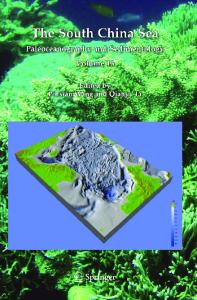Geochemistry and Petrogenesis of Volcanic Rocks from the Continent-Ocean Transition Zone in Northern South China Sea and
- PDF / 951,161 Bytes
- 11 Pages / 595.22 x 842 pts (A4) Page_size
- 107 Downloads / 355 Views
Geochemistry and Petrogenesis of Volcanic Rocks from the Continent-Ocean Transition Zone in Northern South China Sea and Their Tectonic Implications XU Yue1), 2), 3), YANG Yaoming2), YU Hongjun1), 2), *, GAO Wei2), GAO Xiangxing2), LIU Baohua1), 2), TIAN Xu2), YANG Jichao2), and ZHANG Wenquan2) 1) Deep Sea Interdisciplinary Center, Qingdao National Laboratory for Marine Science and Technology, Qingdao 266061, China 2) National Deep Sea Center, Ministry of Natural Resources, Qingdao 266237, China 3) College of Marine Geosciences, Ocean University of China, Qingdao 266100, China (Received May 9, 2019; revised November 21, 2019; accepted January 13, 2020) © Ocean University of China, Science Press and Springer-Verlag GmbH Germany 2020 Abstract Miocene–Pliocene (22–5 Myr) volcanism and associated seamounts are abundant in the continent-ocean transition (COT) zone in the margin of the north South China Sea (SCS). The petrogenesis of volcanic rocks from these seamounts and regional tectonic evolution of COT zone are poorly known. In this paper, we obtained whole-rock major and trace element compositions and Sr-Nd-Pb isotopic data for these volcanic rocks from the Puyuan and Beipo seamounts within COT zone, in northeastern SCS. Based on the geochemical analyses, the volcanic rocks are classified as alkaline ocean island basalts (OIB) and enriched mid-ocean ridge basalts (E-MORB). The OIBs from the Puyuan seamount are alkaline trachybasalts and tephrites that show enrichment of the light rare earth elements (LREE) relative to heavy rare earth elements (HREE) and more radiogenic Sr-Nd isotopic compositions, and have significant ‘Dupal isotopic anomaly’. In contrast, the E-MORBs from the Beipo seamount are tholeiitic basalts that have less enrichment in LREE and less radiogenic Sr-Nd isotopic compositions than the counterparts from the Puyuan seamount. Petrological and geochemical differences between the OIBs and MORBs from these two seamounts can be explained by different mantle sources and tectonic evolution stages of the COT zone. Syn-spreading OIB type basalts from the Puyuan seamount were derived from an isotopically ‘enriched’, and garnet facies-dominated pyroxenitic mantle transferred by the Hainan mantle plume. In contrast, post-spreading E-MORB type basalts from the Beipo seamount are considered to be derived from the melting of isotopically ‘depleted’ pyroxenite mantle triggered by lithosphere bending and subsequent post-rifting at the lower continental slope of the northern margin. Key words
volcanic rocks; geochemistry; tectonic evolution; South China Sea; continent-ocean transition zone
1 Introduction The continent-ocean transition (COT) zone of the passive margin in the north South China Sea (SCS) is a significant transition region between continental and oceanic crust, and the rocks occurred records the SCS extension and subsequent rifting process (Lester et al., 2014; Eagles et al., 2015; Sibuet et al., 2016; Zhao et al., 2018). The spreading and rifting in COT has been accompanied with a series of magmatic
Data Loading...











